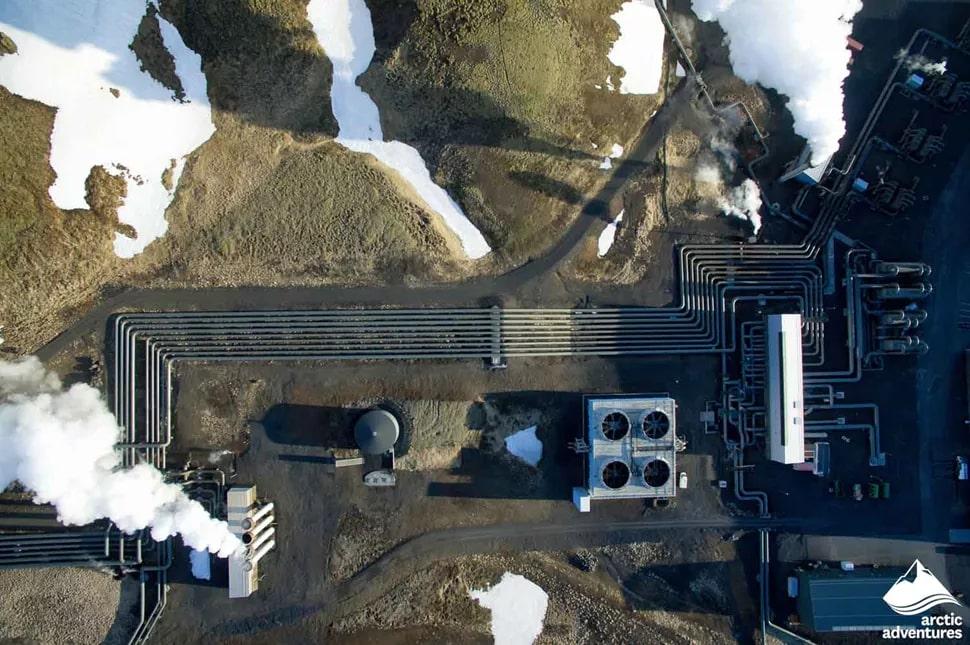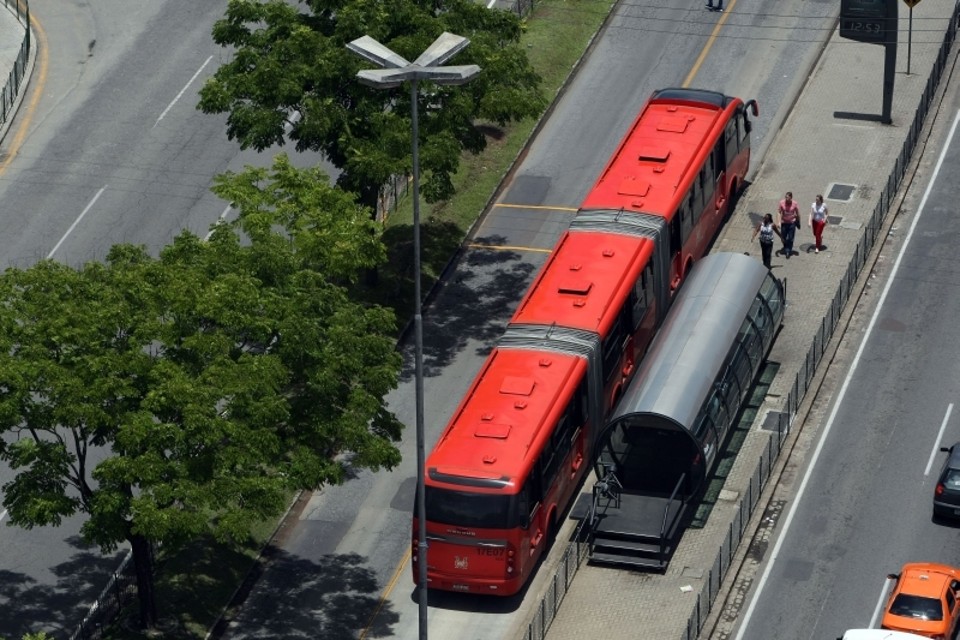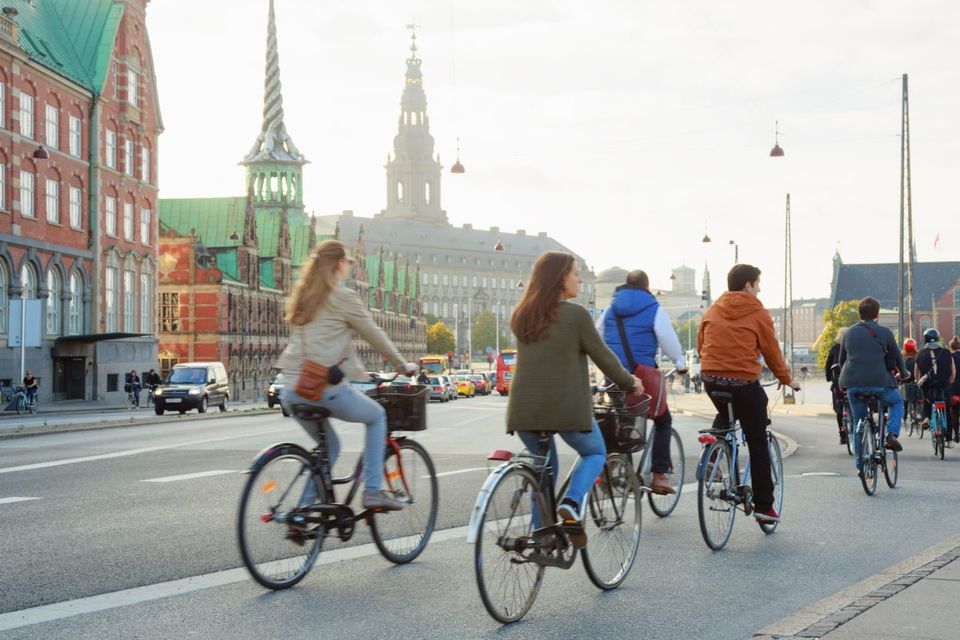What is a green city?
Imagine a city that breathes, cycles like us and grows together with its residents. This is a green city – urban spaces designed not just for efficiency and economy, but for sustainability and symbiosis with nature. A green city, often synonymous with terms such as “sustainable city” or “eco-city”, is an urban environment built through the conscious integration of green spaces, energy-efficient buildings, comprehensive waste management and sustainable transport networks.
Defining the Green City
In essence, a green city prioritizes the preservation of nature and, at the same time, improves the quality of life of all its inhabitants. It is a city that looks to the future, planning not only for the next decade, but also for the next generation. Sustainability is integrated into its development, ensuring that urban growth does not come at the expense of the environment or human well-being.
Characteristics of a Green City
- Renewable energy: Uses solar, wind and water energy to minimize dependence on fossil fuels.
- Waste reduction: Adopts recycling and composting, aiming for a waste-free environment.
- Sustainable Transport: Promotes walking, cycling and public transport to reduce carbon emissions.
- Green Buildings: Constructs buildings using environmentally friendly materials and technologies.
- Urban Vegetation: Integrates natural landscapes into the urban fabric to increase biodiversity and provide green spaces for residents.
Green City: Key Features
What makes a green city thrive? It’s all about the features built into your foundation — literally and metaphorically. Here are some of the critical elements that help these urban areas promote a healthier and more sustainable way of life.
Green City and Renewable Energy Integration
Energy consumption in green cities depends heavily on renewable energy. Solar panels adorn rooftops, wind turbines spin happily at city limits, and in some places geothermal energy provides heat and electricity without drilling deep into the Earth’s carbon reserves.
Green City and Innovative Waste Management
Think beyond dumpsters and dump trucks. Green cities innovate waste reduction through recycling initiatives, comprehensive recycling programs and encouraging businesses and residents to minimize waste production. Here is a summary of what waste management might look like in an environmentally friendly urban area:
| Strategy | Description |
| Zero Waste Stores | Stores where products are sold without packaging to reduce waste. |
| Composting Programs | Local facilities that transform organic waste into soil nutrients. |
| Recycling kiosks | Accessible places where residents can separate and deposit recyclables. |
Green City: Sustainable Transport Networks
In a green city, car horns and exhaust fumes give way to bicycle bells and brisk walks. Cities like Copenhagen and Amsterdam are important examples, where more than 50% of the population commutes by bicycle every day. These cities have extensive networks of bike paths and pedestrian paths that not only keep the air cleaner, but also promote a more active and engaged community.
Green City: Eco-Conscious Building Projects
Buildings consume about 40% of global energy annually, so green cities push for structures that are as energy efficient as they are aesthetically pleasing. Features like green roofs, energy-efficient windows, and smart heating systems are standard. These buildings use sustainably sourced materials designed to reduce energy consumption and increase dependence on natural light and ventilation.
Urban Agriculture and Green Spaces
From rooftop gardens to sprawling community parks, green cities understand the importance of green spaces for health, well-being and ecological balance. These spaces are not only lungs for the city, breathing oxygen and CO2, but they also serve as centers of community interaction and wildlife habitat.
In essence, designing for a green city involves a multidimensional approach to urban life, where each element is designed with sustainability at its core. Stay tuned as we delve into the initiatives, challenges and successes of specific green cities around the world, painting a portrait of what it really means to live in harmony with our urban environments.
Case studies of successful green cities
Green cities are not just theoretical concepts; are vibrant realities in many parts of the world. Here, we explore some case studies that illustrate the successful implementation of green initiatives in diverse urban environments.
Green City – Copenhagen: cyclist’s paradise
Photo: Getty
Copenhagen is often hailed as one of the greenest cities on the planet. The Danish capital has a robust cycling infrastructure that supports an impressive statistic: more than 60% of its residents travel to work or school by bicycle. This commitment to cycling reduces traffic congestion, reduces pollution and contributes to the overall health of its citizens. The city’s ambition doesn’t stop there; Copenhagen aims to become completely carbon neutral by 2025.
Green City – Reykjavik: Driven by Nature

In Reykjavik, almost all heating and electricity comes from geothermal and hydroelectric energy. This use of abundant natural resources provides clean energy and shows how cities can take advantage of their unique geographic characteristics to meet their needs in a sustainable way. Furthermore, Reykjavik’s commitment to eco-friendly living makes it a beacon for sustainable tourism, combining ecological responsibility with cultural allure.
Green City – Curitiba: Innovation in Public Transport

Photo by Henry Milleo
Curitiba, Brazil, has been a pioneer in ecological urban planning since the 1970s. Its innovative bus rapid transit system, which serves as a global model, significantly reduces car use and urban sprawl. The city also participates in extensive recycling programs and has developed green spaces integrated into its urban fabric, proving that sustainable development can improve liveability while preserving natural resources.
Green City and Infrastructure for Sustainability
A city’s infrastructure plays a crucial role in its sustainability. Here, we explore how urban planning and design contribute to creating eco-friendly and resilient cities.
Green City and Smart Urban Planning
Green cities require careful planning that integrates sustainability at all levels. This includes zoning laws that encourage mixed-use developments, reducing the need for long commutes and promoting a balance between residential, commercial and leisure spaces.
Green building projects
Sustainable architecture is fundamental in green cities. Buildings designed with green principles in mind use environmentally friendly materials such as bamboo, recycled steel or reclaimed wood. They also feature technologies that reduce water and energy consumption. For example, smart heating and cooling systems adjust based on occupancy and weather conditions, and green roofs provide insulation and manage stormwater.
Integrating Technology and Nature
Technology plays a fundamental role in sustainable urban development. Smart grids, solar panels and IoT devices help manage energy use more efficiently. At the same time, maintaining a connection with nature through large green spaces and corridors is essential for the well-being of residents and the local ecosystem.
By focusing on these infrastructure elements, green cities not only improve the quality of life of their inhabitants, but also set a standard for sustainable urban development around the world.
Urban Green Spaces
Urban green spaces are essential components of green cities, providing not only aesthetic value but also serving crucial ecological and social functions. These spaces include parks, gardens, greenways and other forms of vegetation that contribute to biodiversity, air quality and recreational opportunities in urban areas.
Benefits of urban vegetation
Green spaces in cities offer a multitude of benefits:
- Environmental: Help reduce urban heat, support wildlife and improve air quality by filtering pollutants.
- Social: Parks and green spaces are gathering places that promote community interaction and provide recreational opportunities.
- Health: Access to green spaces has been linked to reduced stress levels, increased physical activity and improved mental health.
Innovative green space initiatives
Some cities have adopted innovative approaches to integrating nature into urban life. For example, Singapore’s Gardens by the Bay and New York’s High Line park transform urban areas into vibrant green landscapes. These initiatives not only improve the liveability of cities, but also establish benchmarks for urban environmental design.
Sustainable Transport Systems
The cornerstone of any green city is its transportation system. Sustainable transport focuses on reducing dependence on fossil fuels and promoting alternatives that contribute less to urban congestion and pollution.
Sustainable modes of transport
- Public transportation: Efficient and well-connected public transport systems are vital. They reduce the need to use private vehicles and reduce traffic congestion.
- Cycling and walking: Cities such as Amsterdam and Copenhagen are known for their cycling-friendly infrastructure, which includes extensive cycle paths and car parks.
- Electric Vehicles (EVs): Encouraging EV use through the provision of charging stations and incentives can significantly reduce urban air pollution.
Green City Case Study: The Transport Revolution in Oslo
Oslo has made substantial efforts to promote the use of electric vehicles, becoming one of the leaders in the adoption of electric vehicles. The city offers broad incentives, such as free parking and charging stations, to encourage residents to switch to electric cars, complementing its goals for a cleaner, more sustainable urban environment.
By prioritizing green spaces and sustainable transport, cities can dramatically improve their sustainability profiles, creating environments that are not only livable, but also resilient and forward-thinking.
Energy innovations in urban environments
Innovative energy solutions are at the heart of green cities, shaping the way urban environments generate, consume and generate energy. These innovations not only promote sustainability, but also ensure safety and energy efficiency in the urban landscape.
Green City and Renewable Energy Sources
The backbone of any green city’s energy plan involves switching from fossil fuels to renewable sources. Solar panels, wind turbines and hydroelectric energy are common equipment in cities that seek sustainability. For example, San Francisco has made significant progress in integrating solar energy into its energy grid, with the aim of substantially reducing carbon emissions.
Smart Grid Technology
Smart grids use digital communications technology to detect and react to local changes in electricity use. This technology helps to manage electricity demand efficiently, reducing costs and increasing the reliability and transparency of the energy supply chain. Cities like Barcelona have implemented smart grid systems that integrate various forms of renewable energy, demonstrating effective energy management.
Waste management strategies
Effective waste management is crucial to reducing the environmental impact of cities. Green cities adopt advanced strategies to manage waste in ways that promote recycling, reduce the use of landfills and encourage sustainable consumption patterns.
Recycling and composting programs
Successful green cities have comprehensive recycling and composting programs that convert waste into resources. For example, Toronto operates one of the largest organic waste recycling programs in North America, which diverts organic waste from landfills to produce energy and agricultural compost.
Green City and Zero Waste Initiatives
The concept of zero waste goes beyond recycling, focusing on the total reduction of waste generation. This involves designing products and processes to minimize waste disposal. San Francisco’s ambitious zero-waste program aims to eliminate all waste going to landfills by 2030 through aggressive recycling and composting initiatives.
By focusing on innovative energy solutions and effective waste management, green cities can significantly reduce their ecological footprint while improving the quality of life for their residents.
Water Conservation Techniques
Water conservation is a critical aspect of sustainability, especially in urban areas where water demand is high. Green cities implement various techniques to manage and conserve water effectively, ensuring a sustainable and resilient water supply.
Rainwater harvesting
This method involves collecting and storing rainwater for later use, reducing dependence on traditional water supplies. Rainwater can be used for irrigation, flushing toilets and even washing cars, which considerably reduces overall water demand.
| Technique | Use |
| rain barrels | Small-scale collection for home gardens |
| Green roofs | Absorbs rain, reducing runoff and promoting evaporation |
| Permeable Pavements | Allow rain to penetrate and recharge groundwater |
Water Sensitive Urban Project (WSUD)
WSUD integrates water cycle management with urban planning. This approach not only aims to minimize urban impacts on the water cycle, but also to improve the visual and utilitarian aspects of water in the city. Features include swales, bioretention systems, and constructed wetlands that naturally clean and manage stormwater.
Community Involvement and Policies
The success of green city initiatives often depends on active community involvement and supportive policies. Engaging citizens and implementing robust environmental policies can significantly amplify the impact of sustainability projects.
Civic Involvement in Sustainability Efforts
Green cities flourish when their citizens participate in and support sustainability efforts. This can range from community gardening and local clean-ups to participating in policy-making through public consultations.
| Community Activity | Description |
| Volunteer Plantations | Citizens help plant trees and restore natural habitats. |
| Sustainability Workshops | Educational programs to teach sustainable practices. |
| Public Feedback Sessions | Meetings where residents can express their opinions on proposed green initiatives. |
Policy Frameworks that Support Green Initiatives
Robust political support is essential to institutionalize sustainability practices in urban planning and management. These policies may include incentives for the adoption of renewable energy, regulations that promote green building standards, and initiatives aimed at reducing carbon emissions.
| Policy type | Purpose |
| Incentives for green buildings | Encourage developers to adopt sustainable construction methods. |
| Carbon Price | Implement charges on carbon emissions to encourage reduction strategies. |
| Single-use plastic ban | Reduces waste and encourages the use of reusable materials. |
Through these combined efforts in water conservation, community engagement and political support, green cities create a sustainable environment that benefits current and future generations, making urban life more sustainable and environmentally friendly.
Challenges and solutions in the development of green cities
The development of green cities involves overcoming several challenges, ranging from financial constraints to technological obstacles and public resistance. Understanding these challenges and exploring solutions is fundamental to promoting sustainable urban environments.
Common Challenges
- Financial constraints: Budget constraints can impede the adoption of green technologies and infrastructure.
- Technological Limitations: Some cities may not have access to advanced technologies needed for sustainable projects.
- Public Resistance: Resistance from citizens and stakeholders who are accustomed to traditional urban development practices.
Solutions to overcome challenges
- Public-Private Partnerships (PPPs): Encourage private sector investment to finance sustainable city projects.
- Educational Campaigns: Raise awareness and educate the public about the benefits of green living to reduce resistance.
- Technology transfer initiatives: Promote collaboration between cities and technology providers to improve access to sustainable technologies.
| Challenge | Solution |
| Financial Barriers | Public-Private Partnerships to finance projects |
| Technological Gaps | Collaborations to access new technologies |
| Social Resistance | Educational campaigns to change public perception |
Green City and Future of Urban Life
As we look to the future, green cities are poised to redefine urban life. Technological innovations and evolving public awareness are driving cities towards more sustainable and efficient models.
Forecasts for Urban Developments
- Smart Cities: Integration of IoT and smart technologies to manage city resources efficiently.
- Rise of vertical gardens and urban farms: Promote local food production and reduce food miles.
- Expansion of green mobility solutions: Increased adoption of electric and hydrogen vehicles, along with improved cycling infrastructure.
Emerging technologies
- IA e Big Data: Use artificial intelligence and big data to optimize energy use, traffic flow and waste management.
- Advanced Water Recycling Systems: Technologies that improve water reuse and minimize waste.
- Positive Energy Buildings: Buildings that generate more energy than they consume through renewable sources.
| Technology | Impact on green cities |
| IA e Big Data | Optimize resource management |
| Vertical farming | Localize food production and reduce emissions |
| Green Mobility | Promote sustainable transportation options |
By exploring these future trends and technologies, green cities will continue to evolve, offering cleaner, more sustainable and more inclusive urban environments.
Health and Social Benefits
Green cities don’t just improve the environment; they also improve the health and social well-being of their inhabitants. The integration of natural elements and sustainable practices in urban areas has significant positive effects on public health and community dynamics.
Benefits for physical and mental health
- Better air quality: Reducing pollution from green transportation and energy sources leads to cleaner air, which can decrease respiratory and cardiovascular problems.
- Access to Green Spaces: Exposure to greenery has been shown to reduce stress levels, improve mood and encourage physical activity, contributing to better overall physical and mental health.
Green City Improving Community Well-Being
- Social cohesion: Public parks and green spaces are social hubs that encourage community interactions, promoting relationships and community engagement.
- Security and Inclusion: Sustainable urban projects often include safer, more navigable streets and public spaces that are accessible to everyone, including the elderly and people with disabilities.
| To benefit | Description |
| Cleaner air | Reduces health risks associated with pollution |
| Community involvement | Encourages stronger social ties |
Green City: Impact on Climate Change
The development of green cities is crucial in the global effort to mitigate climate change. By reducing dependence on non-renewable resources and decreasing greenhouse gas emissions, these urban areas play a key role in the fight against global warming.
Reducing the carbon footprint
- Sustainable Transport and Energy: Switching from fossil fuels to renewable energy and promoting cycling and public transport significantly reduces urban carbon emissions.
- Green Infrastructure: Buildings and other structures designed with sustainability in mind help reduce energy consumption and carbon production.
Global Influence
- Political Leadership: Green cities often set examples that inspire national and international environmental policies.
- Innovation Center: Urban centers are hotbeds of sustainability innovations that can be scaled globally, impacting broader climate change mitigation efforts.
| Impact | Contribution to climate change mitigation |
| Lower emissions | Direct reduction of greenhouse gases |
| Innovation and Politics | Serve as role models for sustainable practices around the world |
Conclusion: Green City
The transition to green cities represents a dynamic and essential shift in our approach to urban development. As we face growing environmental challenges, the sustainability principles embodied in green cities offer not only a model for healthier, more resilient urban environments, but also a path to meaningful social and ecological transformations. By embracing innovative technologies, inclusive policies and community engagement, these cities are setting the stage for a sustainable future that benefits every aspect of life – from the air we breathe to the communities we cherish.
Green cities are more than just a concept; They are a necessary evolution in the way we think and build our urban spaces. As we continue to innovate and implement these green strategies, the promise of sustainable, vibrant and inclusive cities becomes increasingly achievable, offering hope and direction for a healthier and more sustainable world.
Going forward, it is imperative that policymakers, urban planners and citizens champion the green city model, ensuring that these sustainable practices become the norm rather than the exception. Together, through committed action and a shared vision, we can transform our urban landscapes into thriving green cities that protect our planet and enrich our lives.
If you want to learn about our consultancies in Portuguese language, click here.
The post Green City 101: Designing Sustainable Urban Futures appeared first on UGREEN.




